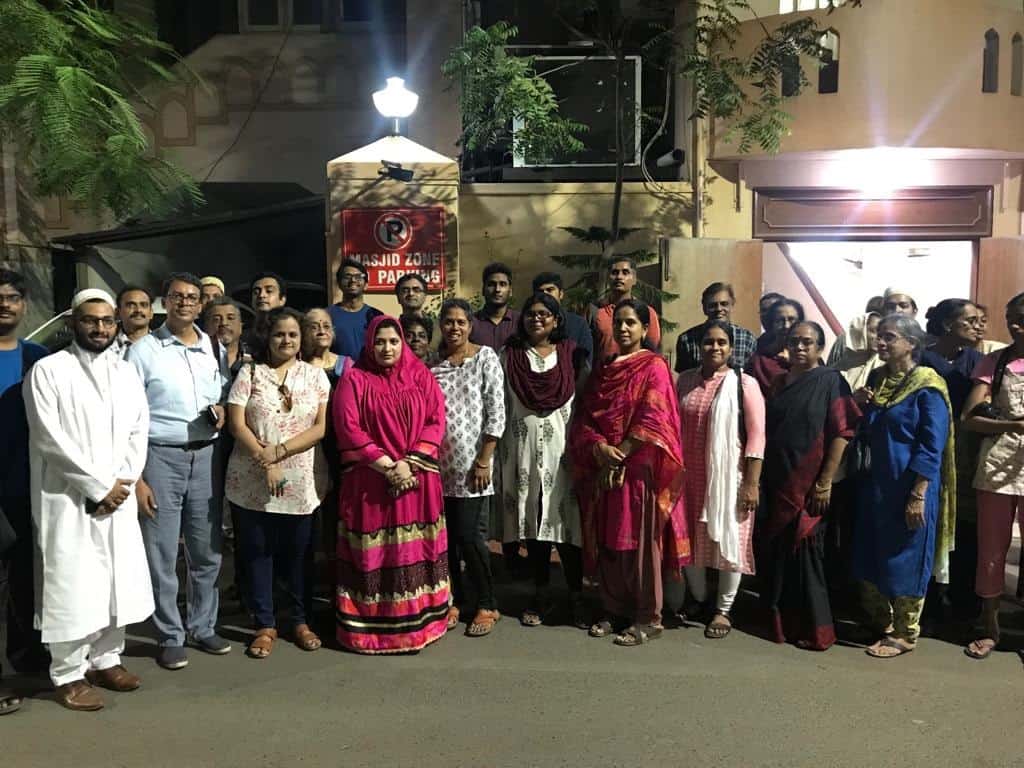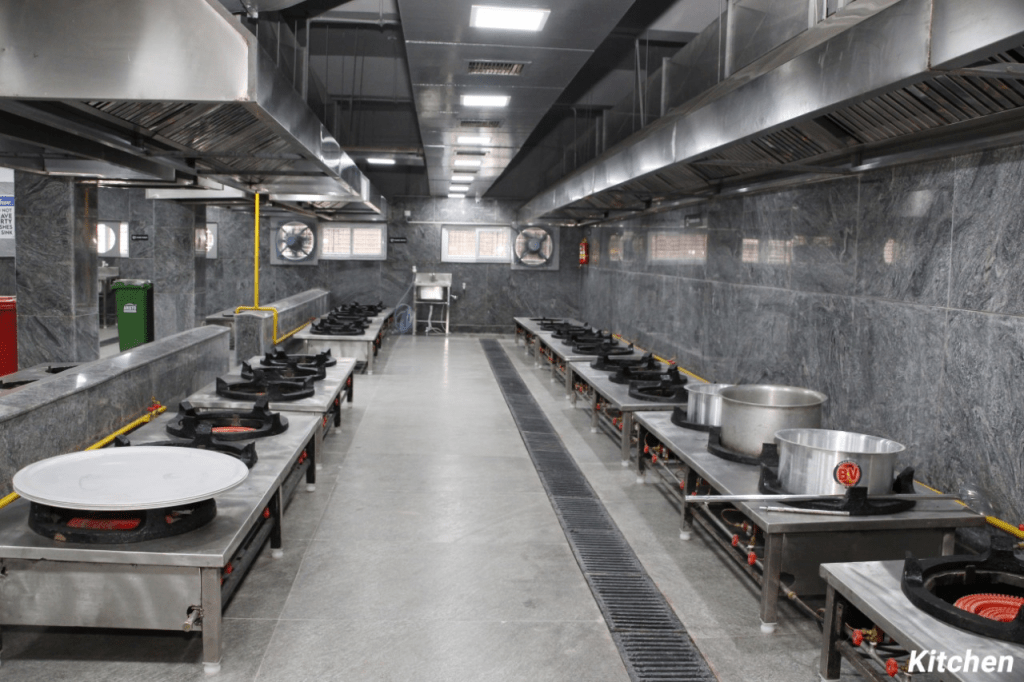For anyone harbouring the cliched idea that all Muslim families make Biryani on festive occasions, the Bohras of Chennai challenge this notion with their famous festival staple, the dal chawal palida. “It is unique to the Bohra community, wherein the dal is layered between rice. Although this is primarily a vegetarian dish, people also add meat to it,” explains Tasneem Akbari-Kutubuddin, a Chennai-based journalist and editor. This is one of the many unique things about the culture and practices of the 10000-strong Bohra community who have made Chennai their home.
For the past three years, Tasneem has been documenting the history and heritage of the Bohras of Chennai. Her ancestors were some of the first Bohras to settle down in Madras in the late 1700s. She routinely organises a heritage walk to create awareness about the community during the Madras Day celebrations.
“As I was preparing for the Bohra walk, I chanced upon a lot of documents collected by my ancestors over the years that trace the history of our community in Chennai,” she says.
The Dawoodi Bohras, a sect of Shia Muslims, have their origins in Yemen. Due to various reasons, they began migrating to India and other parts of the country through the coast. At first, the Bohras settled down in Gujarat and are still found in large numbers in the state. From there, families began migrating to other parts of India. In Chennai, the Bohra community is found predominantly in the northern part of the city. And they have an interesting tale to narrate about how they made their way to Chennai.
From Gujarat to Chennai via Arcot
Towards the end of the 1790s, a young Dawoodi trader, Mulla Jafferji Ibn Mulla Ismailji came down to Tamil Nadu from Surat to meet his uncle and also in search of livelihood opportunities. He travelled via the Malabar Coast to reach Arcot.

“He joined his uncle, Sheikh Ahmed Ali in Arcot, who helped him set up a bangle business. Eventually, he moved from Arcot to Madras in 1796 and set up a garment business. According to one theory, this was because his uncle, who was a courtier in the darbar of the Nawab of Arcot, came to know that the nawab had a bad eye for his daughter Halimabi, so he got her married to Mulla Jafferji and sent them away to Madras in 1800,” writes Tasneem in her blog, ‘Bohras of Madras’.
In Madras, Jafferji settled down in Angappa Naicken Street in Parry’s Corner, near the harbour and started a garment business. As his business flourished, his garments were imported to other countries. The Nawab of Arcot bestowed the title ‘Malek ut Tajjar’ on him, as he came to be known as a successful trader.
After a couple of years, Sheikh Ahmed Ali also joined him in Madras but he passed away in 1803. Jafferji bought a piece of land and built the Saifee Mosque in 1810, the first mosque of the Bohras in Chennai, located in Moore Street. The mosque was later expanded by Motabhai Seth, another trader from Surat, who settled in then Madras.
At present, there are three community mosques in Chennai, namely Saifee Masjid, Mohammadi Masjid and Vajihi Masjid, three cemeteries and a community school named Madrasatus Saifiyatul Burhaniyah School (MSB) in SV Koil Street.
Traders by profession
The term ‘Bohra’ is derived from the Gujarati word ‘Vohra’ which means traders. A majority of the people from the community can be found residing and doing business in and around Parry’s Corner in North Madras. Hardware, steel and metal and automotive parts supply are some of the main trades that they focus on.
Tasneem states that one of the most prominent Bohra-run businesses in the city was S Akbarali Haidarali & Co, a hundred-year-old trading company that is still in operation in Linghi Chetty Street, Parrys. “Although the original partners sold the company in the 1960s and the ownership changed multiple times in between, we can still find the original furniture intact,” she adds.
Bohra women are also equally enterprising and encouraged to set up their own businesses. Bohra women have been successful entrepreneurs in their own right in garments, food, knitting and arts and crafts businesses.
Did you know?
Bohras converse in Lisan ud-Dawat, which is an amalgamation of Gujarati, Persian and Arabic.
Women in the community wear two-piece clothing named ‘Rida’ (bright, coloured burkhas), men wear kurta pajama with an overcoat (called as Saya) and a crocheted topi.
Bohra cuisine and dining etiquette
Dawoodi Bohra cuisine is a combination of Gujarati, Persian and Mughlai cuisines. Besides non-vegetarian dishes, one can also find distinctive vegetarian dishes such as cold baingan bharta prepared with curd and spring onions, sev ni tarkari where bhel puri sev is cooked with onions.
“Ghugri is another exclusive dish cooked in Bohra households on the New Year night. It is a dessert made with wheat and jaggery. We also make gulab jamuns and halwas during occasions,” Tasneem explains.
Hatimy’s and Alambardar are two dessert outlets in Mannady Street run by Bohras that sell the traditional desserts of the community. Persian samosas, dal samosa and channa bateta are popular snack items made by Bohras, sold as street food in Parry’s Corner.

The dining etiquette in Bohra households is centred around reducing food waste. People dine out of a huge plate, referred to as ‘thaal’, in numbers of eight. “The meal begins and ends by taking a pinch of salt. The platter consists of a starter, a dessert and the main course. The main course is served upon request to ensure that food does not go to waste,” Tasneem adds.
Read more: Chennai’s historic landmark stands forgotten and dilapidated
Community living is key for Bohras of Chennai
Community living is the ideal of Dawoodi Bohra Muslims and they thrive on it. An embodiment of the idea is the community kitchen run by them near the mosque that serves one meal a day to Bohra families who have signed up and live nearby. They cater to 980 families every day and also extend the service to the homeless and needy when there is a requirement.
“Bohra families live together and community events are held regularly. We have 12 departments in our administrative set-up that take care of specific activities. This is distinct in our community,” says Mufaddal Chanasmawala, public relations officer, Dawoodi Bohra Jamaat Trust Anjuman e Mohammedi.

The Bohras of Chennai also extend their services and work towards several social causes in the city. For instance, the environment department has initiated a ‘no plastics’ campaign this year. “As the first step towards this move, we are trying to completely switch to steel containers for delivering food from our community kitchen. We are encouraging our community members to avoid plastics of all forms and choose eco-friendly alternatives. We were part of the ‘Walk for Plastic’ initiative recently where we collected plastic waste from public spaces in the city,” adds Chanasmawala.
The environment department has also adopted around five traffic islands in and around Parry’s signal and handle their upkeep.
I guess the study has not been conducted properly as the oldest establishment is not akberalihyderali but its A.Mohamed & Co, A.K Abdullah Bhoy and Abdul kader and sons with all starting in the year 1916 having their blood line still running the business
The article quotes Tasneem Akbari-Kutubuddin, Chennai-based journalist and researcher, as saying that S Akbarali Haidarali & Co is “one of the most prominent Bohra-run businesses in the city” (and not the oldest).